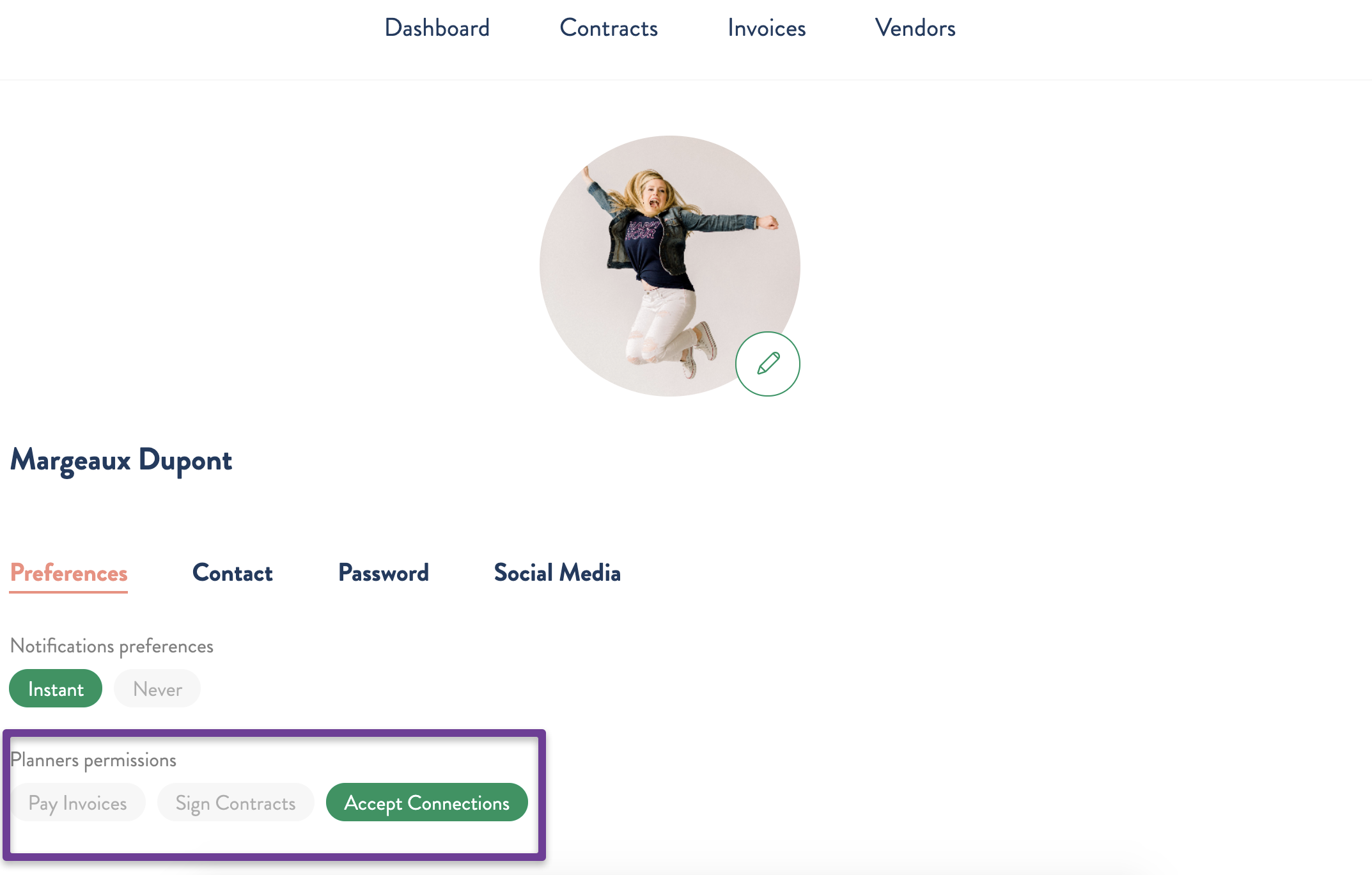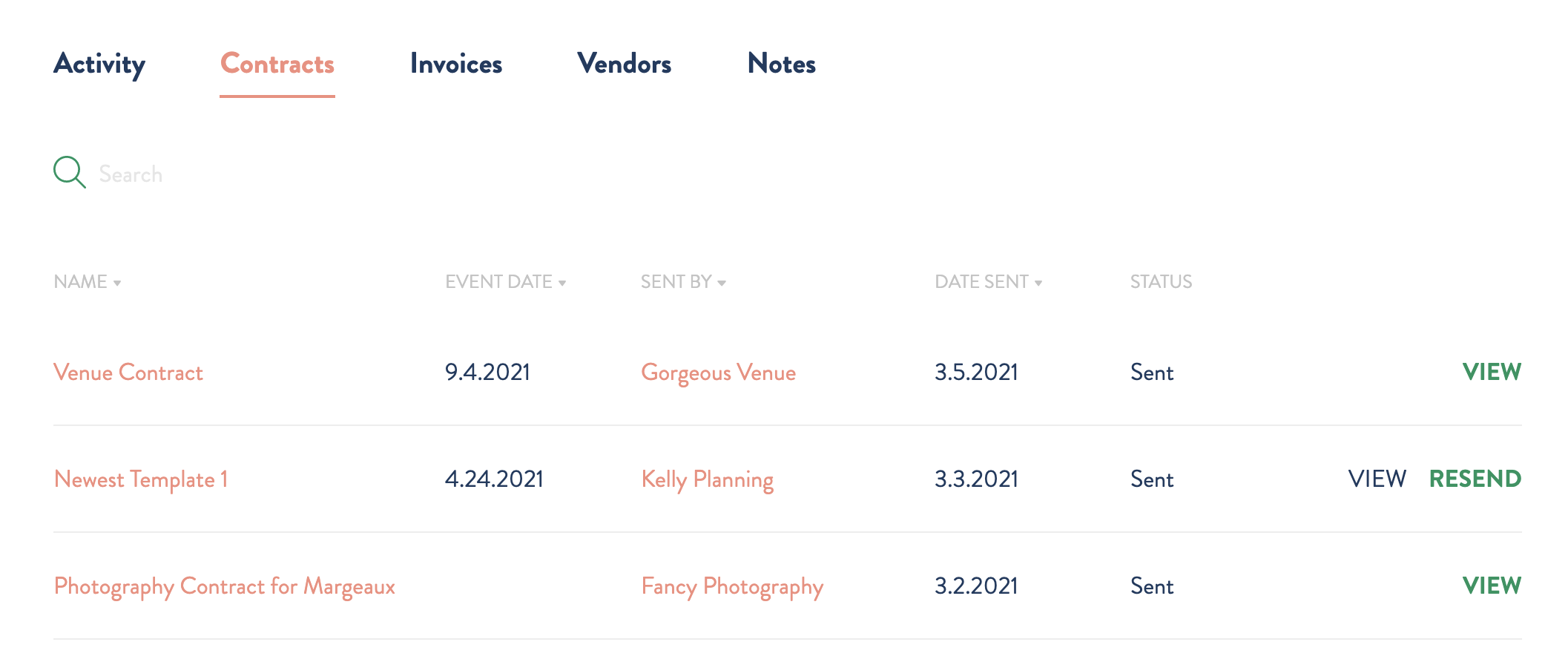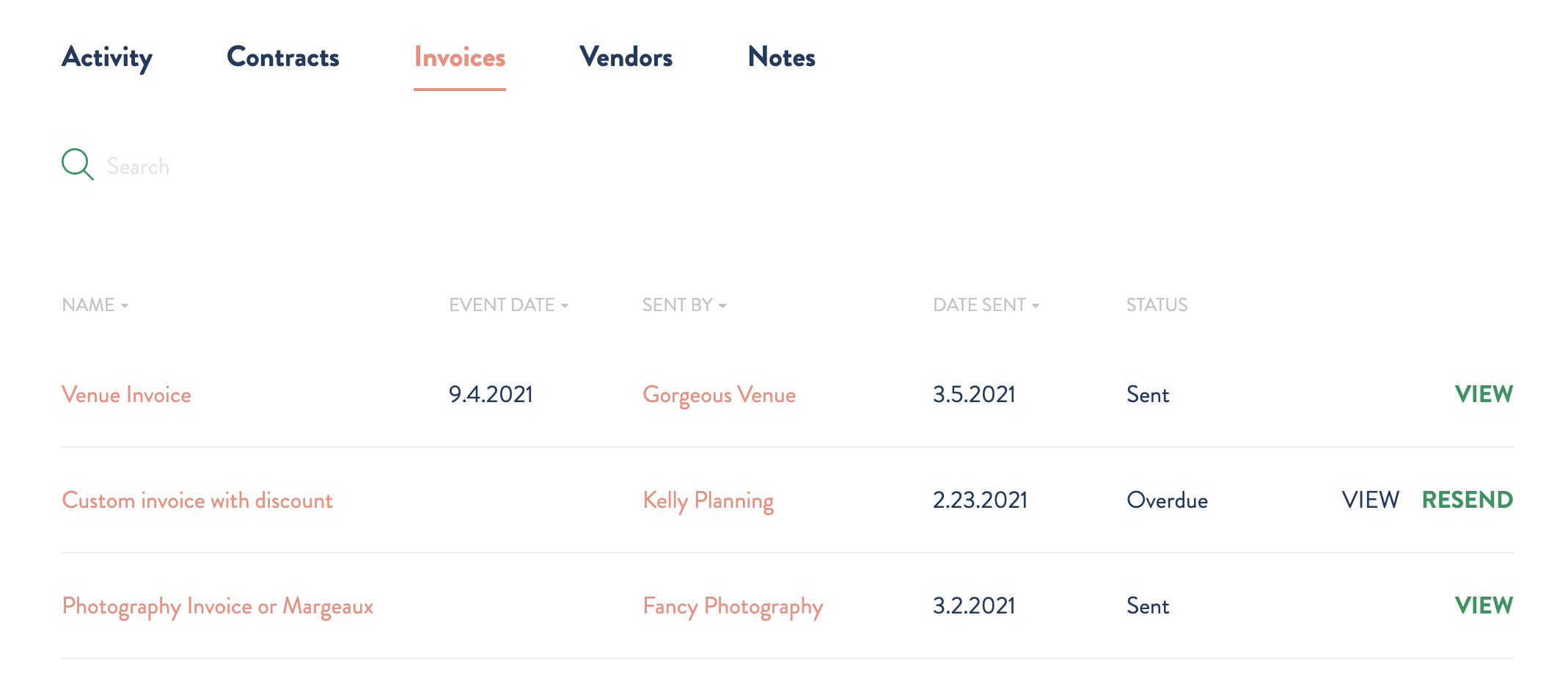How many emails, phone calls, and texts have you initiated just to check on the status of a client’s contract or invoice from a vendor? Imagine how much time you would save if you had the ability to sign contracts and/or pay invoices on behalf of your clients. RPC offers just that — and planners are loving the added control and time savings it offers! Here’s how it works in 3 easy steps:
Step 1. Client enables permissions
First and foremost, clients need to grant you permission to sign or pay on their behalf. They simply navigate to their profile and select the appropriate items in their “planner permissions” section:

Note that planners automatically have the ability to “Accept Connections” (or decline) on behalf of clients. This means that when other vendors on RPC request to connect with a client, planners can accept or decline. Clients can also update this permission in their profile (screenshot above).
Step 2. Signing contracts on behalf of clients
Once your client has granted you permission to sign contracts on their behalf, head to their client detail page:

Click the contracts tab. From here, you will see contracts that you have sent the client as well as contracts sent by the client’s other vendors on RPC.
- Click view to access the contract and review all terms and conditions
- Click “sign” at the bottom of the contract
- Upload, select a default, or draw in a signature. Note that best practice is to list your name “on behalf of” the client’s name. For example: Jane Smith on behalf of Kelly Walker. When initialing, it should read your initials “OBO” followed by the client initials. Using the example above: JSOBOKW.
- That’s it! The contract is signed — both the vendor and client receive notifications and can access the signed contract from their accounts
Curious about the legality? There are lots of resources available online providing the legality of this. It is important to know your rights and limits. A few things to note:
- Make sure to sign with your company name
- Make sure to sign “on behalf of” or obo and the clients name
- Make sure you have permission
- If concerned consult with a lawyer prior to signing
Step 3. Paying invoices on behalf of clients
With permission to pay invoices on behalf of clients, you can manually make payments or set up automatic payments for them.

Also from the client detail page, click the Invoices tab. View the invoice that needs to be paid and:
- Click “Select” next to the appropriate payment, then click “Pay” (on the bottom, right of the invoice)
- Make sure you know which payment method your client wants to use if there is more than one in the payment method dropdown
- Click “Pay”
- Both the client and the vendor who sent the invoice receive an email notification that the payment was made — and the invoice itself is updated to reflect a “pending” payment. Once the payment processes, the installment on the invoice will reflect as “paid”
- If your client has indicated that automatic payments are acceptable, simply select the option on the bottom-left of the invoice. This will trigger automatic payments on the corresponding due dates. Notification/reminder emails will be sent 3 days prior to the auto-payment processing. If a due date is updated on an invoice, the auto-payment date will also update. Auto-payments can be disabled by de-selecting the option on the invoice.

Approve contracts and invoices
Sound great but not quite for you? No worries! Even without paying/signing permissions, planners can “approve” documents. Navigate to a contract or invoice from the client detail page, then click “Approve” on the bottom-right of the contract or invoice. This sends a notification to your client that you have reviewed and approved the contract/invoice and indicates that they are good to sign or pay themselves!
Tip: Contracts or invoices sent to a client by your own planning company cannot be paid or signed on behalf of the client.
RPC is all about streamlining paperwork and reducing bottlenecks. Paying and signing on behalf of clients is a great way to do just that!



